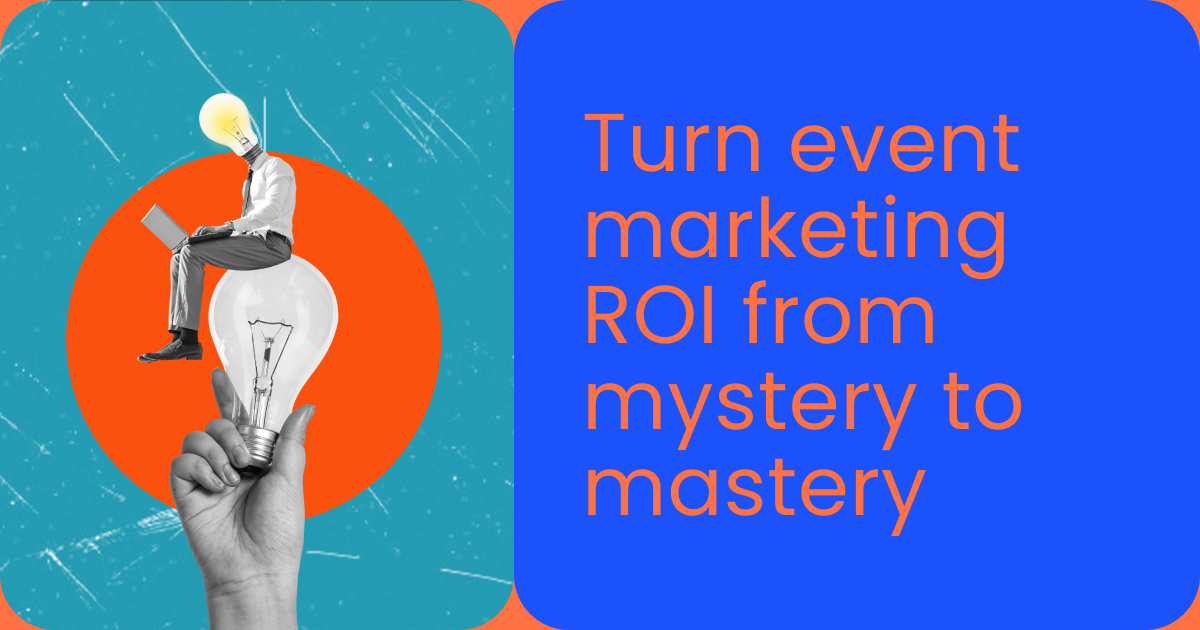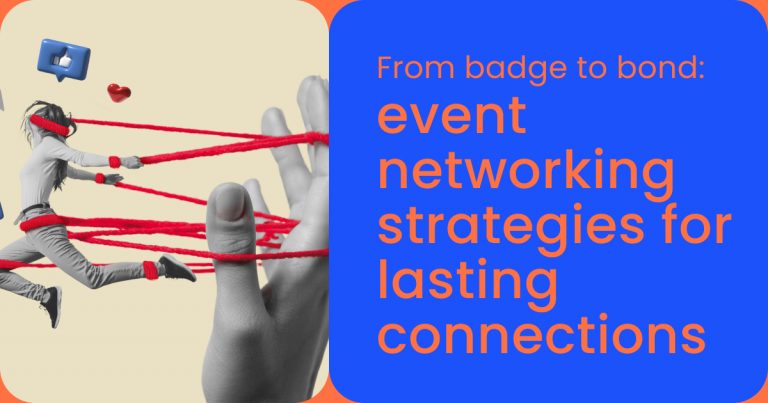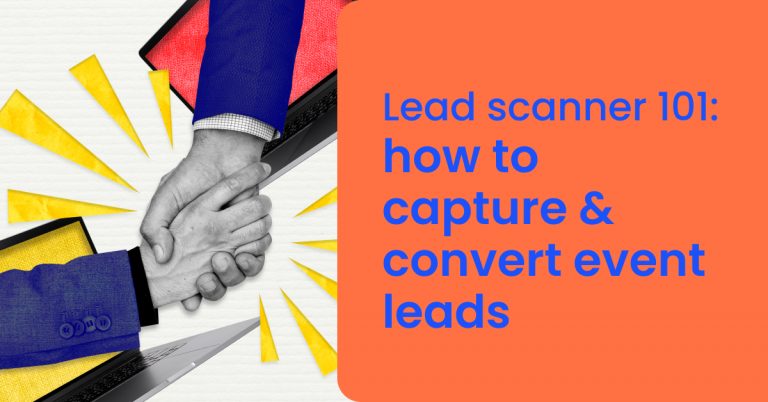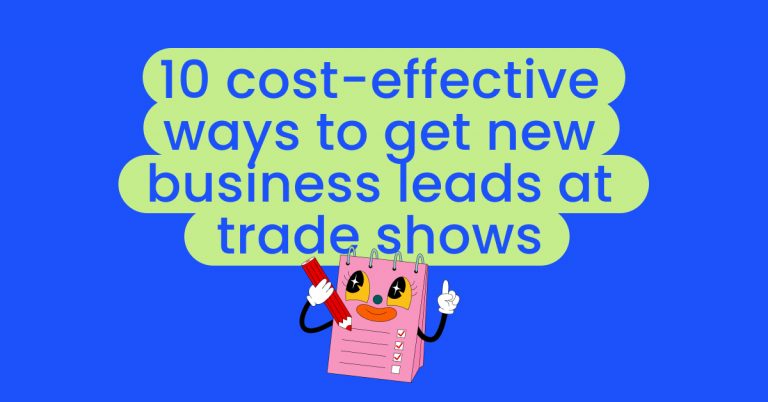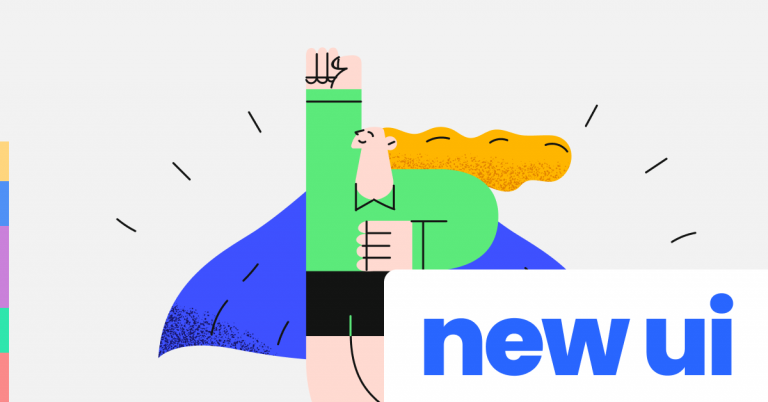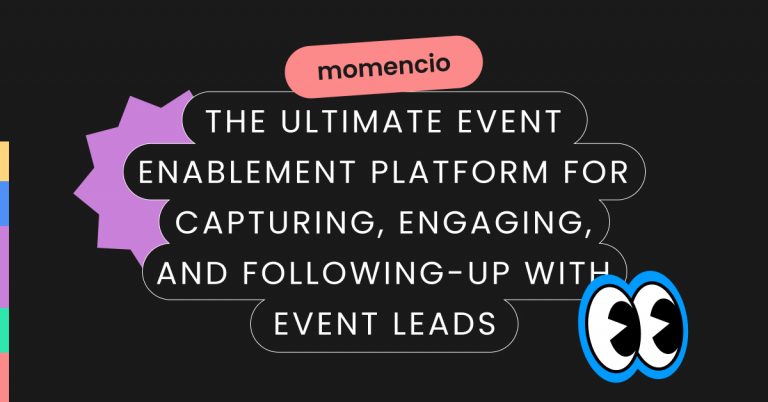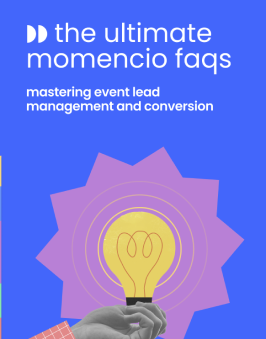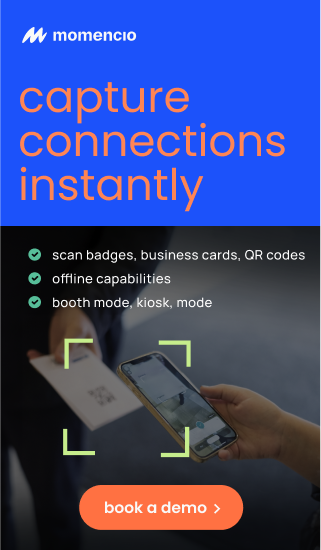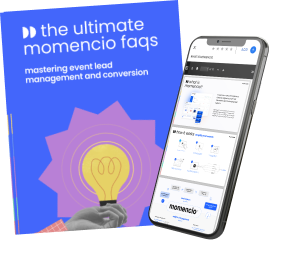You spent three days on the trade show floor.
You hustled through back-to-back demos, collected hundreds of leads, and maybe even snagged a few handshakes that felt like closed deals. Everyone’s smiling. The sales team says the booth “was a hit.” High-fives all around.
But now it’s Monday morning. Your inbox is already asking for numbers. Not just a recap. Not just a lead count. Someone wants to know what it was all worth.
And that’s where the unease creeps in.
Because deep down, you know something that most won’t admit out loud: even with all the tools, the scanners, the CRMs and dashboards… you still can’t quite explain what the trade show really delivered. You can’t say—clearly and confidently—what the return was.
Was it worth the $250,000 investment? Was it worth your team’s time, energy, and travel? Will any of it turn into revenue?
The truth is, most event marketers can’t answer those questions. Not because they aren’t smart or strategic. But because the way we talk about ROI is broken. We measure activity, not outcomes. We count leads, not momentum. We get stuck trying to prove value using the wrong lens.
Event marketing ROI isn’t missing because you forgot to follow up. It’s missing because the system isn’t built to tell the whole story.
This article isn’t here to fix that with jargon or fancy acronyms. It’s here to tell the truth. To pull apart the real reasons why ROI still feels like a mystery—and what to do about it.
Because mastery doesn’t come from a dashboard. It comes from knowing what to look for, and what to let go.
Why event marketing ROI is still elusive for trade show teams
Trade shows reward motion. Booth traffic. Lead volume. Scans. Social buzz. And when you wrap an event with hundreds of new contacts and a packed activation schedule, the instinct is to call it a success.
But motion isn’t the same as momentum. And it definitely isn’t the same as ROI.
Here’s where things start to unravel. After the event, most teams are left with a lead list—rows and rows of names, titles, companies, maybe a few scribbled notes. It looks impressive in a spreadsheet, but it doesn’t explain what the event actually achieved. It tells you who came by, not what moved them closer to a decision.
That’s the first reason event marketing ROI remains elusive: we confuse activity for value. A badge scan is easy to track. Buying intent is not.
The second issue is time. Your sales cycle might be three months, six months, or longer. Even if your team executed flawlessly—ran demos, booked meetings, sent follow-ups—you might not see revenue for another quarter. But finance wants answers now. Marketing wants proof now. So you end up scrambling to assign value to metrics that are easy to pull, even if they don’t reflect what really matters.
The third challenge is a lack of definition. Everyone talks about “proving ROI,” but few agree on what that means. Is it pipeline generated? Revenue closed? Net new logos? Brand influence? Expansion of existing accounts? When the goalpost isn’t clear, the report never quite satisfies.
And so, despite all the effort, event marketers find themselves in a familiar place: delivering post-show decks full of lead counts and traffic stats, hoping someone sees the signal buried in the noise.
The problem isn’t that we’re doing it wrong. The problem is that we’re being asked to show outcomes using tools designed to measure inputs.
Until we start telling the story differently—until we stop measuring value by what’s easy to count—ROI will remain a moving target.
The true cost of ‘lead capture’ tunnel vision
Picture this.
You’re standing at your booth. Your rep scans a badge. You ask a quick qualifying question, log a note, smile, and move to the next person. You’ve been told to “capture everything.” So you do.
By the end of the event, your system says you’ve captured 312 leads. On paper, that’s a win.
But what happens next?
That badge scan becomes a row in a spreadsheet. That row gets passed to sales. Sales looks at it, sees no context, and moves on. No one knows what was discussed, what the person cared about, or why they even stopped by. There’s a name—but no narrative.
This is the cost of tunnel vision.
We’ve optimized so hard for capture that we’ve lost the plot. The goal wasn’t to collect leads. The goal was to create momentum—real, actionable progress toward a sale. But we rarely measure that. And because we don’t measure it, we don’t design for it.
Lead capture isn’t the problem. It’s necessary. But when it becomes the finish line instead of the starting point, everything downstream suffers.
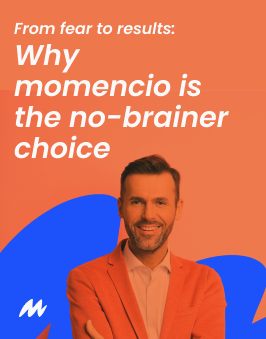
We send the same generic follow-up to everyone. We hand sales a cold, contextless list. And then we blame “low conversion” on messaging or timing, when in reality, the root of the issue was how we treated the moment of engagement—as a transaction, not a conversation.
The irony? Some of the highest-potential buyers don’t even get scanned. They show up, they engage, they ask smart questions—but no one logs it, because the lead capture system was busy, or the rep forgot. So those moments vanish. And ROI vanishes with them.
Meanwhile, the low-intent visitor who wanted free swag? Their badge got scanned three times.
Data without discernment is noise. And when all leads are treated equally, none of them get the attention they deserve.
If we want to prove ROI, we have to look beyond the number of leads and ask: What did we actually capture?
A relationship? An opportunity? Or just an email address?
Only one of those has a chance of turning into revenue.
Bridging the disconnect: who owns post-event ROI?
The event ends. The booth is packed up. Everyone flies home.
And then… silence.
For a few days, maybe a week, there’s excitement. The team’s still riding the high of good conversations, promising leads, positive energy. But as that fades, so does the clarity around who’s supposed to do what next.
Marketing thinks sales is following up. Sales thinks marketing is still nurturing. Leadership assumes it’s all automated.
In the absence of a clear owner, momentum disappears.
And this is where most ROI gets lost—not at the event, but in the days and weeks after. The follow-up phase is rarely owned. It’s shared, vaguely, across teams. Which means no one feels truly responsible for making sure leads progress. Conversations stall. Good intent cools off. The window for relevance starts to close.
By the time someone decides to check in—maybe two weeks later—the moment is gone.
The truth is, post-event ROI doesn’t live in the booth. It lives in the follow-through. In the quality and speed of your next touch. In how quickly you remind someone why they stopped to talk in the first place.
But this only happens when someone owns it.
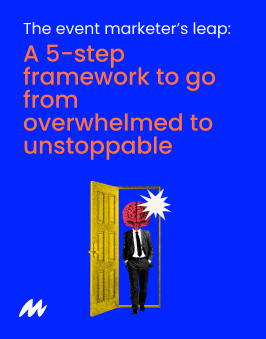
Ownership means designing a system that isn’t just about what happens at the event—but what happens after. Who sends the first email. Who logs the next action. Who decides if a lead moves to pipeline or needs nurturing. Ownership is accountability, and without it, your event becomes a really expensive brand exercise.
Let’s be clear: this isn’t about assigning blame. Sales is busy. Marketing is busy. Everyone’s calendar is full.
That’s why this has to be intentional.
A shared inbox isn’t a strategy. A drip campaign isn’t a plan. You need a bridge—a clear, documented agreement about how leads move from trade show interaction to sales conversation.
Because without it, your ROI isn’t just delayed. It’s diluted. It’s fragmented. And eventually, forgotten.
All the work, all the budget, all the potential—left hanging in limbo.
Ownership closes the gap.
And if you don’t define it, the gap just gets wider.
What sales won’t tell you (but ROI depends on it)
Trade shows aren’t just marketing plays. They’re sales plays in disguise.
The people who come to your booth, ask smart questions, linger during the demo—these aren’t passive browsers. They’re signal flares. But if those signals aren’t captured with context and clarity, they disappear into the noise.
And here’s the part no one tells you: sales isn’t going to fix that.
Sales won’t remember what happened at the booth
Your rep talked to 40 people in a day. Maybe more. And unless they wrote it down—or had a system that helped them do it in real-time—most of that context is gone.
That game-changing insight from a prospect? Lost in a voice memo. The nuance around a company’s buying timeline? Trapped in someone’s memory.
And when they get back to the office, their calendar fills up again. Notes go untranscribed. Leads go unlabeled. Everyone moves on.
Sales doesn’t want a long lead list. They want clarity.
No one on the sales team is hoping for 300 leads to sort through. They want the 30 that actually matter. The ones who showed interest. The ones who asked to be contacted. The ones whose challenges match your solution.
This is where marketing can be the bridge—not by sending leads, but by sending context.
Imagine if every lead came with a snapshot. Not just a name and title, but what was discussed. What materials they interacted with. What they said about budget or timeline. What content they clicked on after the event. It’s the difference between handing off a phonebook and handing off a roadmap.
Some teams are solving this now. They’re using tools that let booth reps capture notes and send personalized follow-ups on the spot, right from the floor. No gaps. No waiting. Every conversation is logged and tracked in real time, with content that reflects exactly what was said. When that lead hits the CRM, it’s not just a contact—it’s a conversation, ready to continue.
(You’d be surprised how much faster sales responds when they’re handed a complete story instead of a spreadsheet.)
Sales follows up on what’s easiest, not what’s most valuable
Here’s the quiet truth: salespeople are time optimizers. If a lead doesn’t come with enough information to act, it drops to the bottom of the list.
But if that same lead shows signs of interest—downloads a file, visits a microsite, watches a demo reel—suddenly, they rise to the top.
That means your post-event engagement strategy matters more than you think. Not just emails, but tailored digital experiences. Not generic nurture tracks, but content that speaks to what they already said.
This isn’t about being flashy. It’s about being remembered.
ROI starts when sales re-engages
Everything you did at the event—the booth design, the messaging, the giveaways, the conversations—that was all the setup.
But ROI only happens if someone picks up where you left off.
That doesn’t mean handing off a lead and hoping for the best. It means designing a system where the event is the start of a longer, smarter conversation. One where nothing gets lost. One where your best leads don’t get left behind.
Because in the end, it’s not about what sales tells you. It’s about what you’ve made easy for them to act on.
Unifying messy event data into revenue-driving insights
After the event, the real work begins.
Not the follow-ups. Not the thank-you emails. But the part where you try to make sense of what happened—what worked, what didn’t, and what needs to be done next.
And more often than not, that clarity never arrives.
Data lives in too many places
You have badge scans in one platform. Notes from sales in another. Presentation stats in a cloud folder. Social engagement tracked separately. And then there’s the CRM, which is supposed to pull everything together—but rarely does.
It’s not a tech problem. It’s a design problem. These systems weren’t built to talk to each other. Which means they rarely do.
And when the time comes to report on ROI, you’re left piecing together fragments. A dashboard from here, a spreadsheet from there, some “insights” someone remembered from the booth. It’s like writing a novel using sticky notes.
When insight is delayed, decisions get worse
The longer it takes to understand what actually happened at your event, the harder it becomes to take smart action.
What content worked? Which personas engaged? Which reps had the best conversations? What signals pointed to real buying intent?
You can’t answer those questions if the data is sitting idle. Or worse, buried in systems that no one logs into after the event ends.
ROI doesn’t disappear because there were no results. It disappears because no one can find them.
Smart teams are closing the gap
The best event teams aren’t waiting for data to sync days later. They’re using platforms that let them track interactions as they happen. Conversations are captured in real-time. Content engagement is logged automatically. Follow-ups are triggered based on interest, not guesswork.
They’re not stitching together the story after the event. They’re writing it while it happens.
And when it’s over, everything’s already connected—content views, lead scores, personalized follow-ups, sales-ready signals—automatically flowing into their CRM or sales tools.
No scrambling. No digging. Just answers.
You wouldn’t need to chase insights if your event system was built to think like a marketer and behave like a seller.
There’s tech that does this. Seamlessly. From booth to close.
(If you’re curious, it starts with capturing more than just a badge scan. It starts with understanding intent.)
Insights shouldn’t be an afterthought
The ultimate irony of event marketing is that we spend months planning the experience—then treat the data as an afterthought.
But the data is the experience. It’s how we learn. How we improve. How we prove value.
ROI isn’t a number. It’s a story. But you can’t tell it without the right signals, in the right place, at the right time.
And if the tools you’re using weren’t built for that, maybe it’s time to rethink the stack—not by adding more, but by choosing better.
Conclusion
Trade shows aren’t easy to measure. They’re chaotic, layered, and full of moments that don’t fit neatly into a dashboard.
That’s the truth most teams quietly live with.
And yet, year after year, they show up. They build the booth. They craft the message. They engage the audience. They generate opportunity.
The problem isn’t effort. It’s what happens after.
ROI doesn’t vanish because the event didn’t work. It vanishes because the system isn’t designed to catch it.
We chase the obvious metrics—lead volume, scans, clicks—because they’re easy to find. But the real indicators of value are slower, softer, and buried inside human interactions. That’s what makes them hard to track—and worth tracking.
The path forward isn’t more dashboards. It’s better signals. A tighter connection between what happens at the booth and what happens next. And a commitment to treating post-event follow-up as part of the event itself—not an afterthought.
Event marketers don’t need more tools. They need better ones. Ones that think like they do. Ones that treat context as fuel, not noise.
Mastery doesn’t come from doing more. It comes from doing the right things, with clarity, on purpose.
And ROI? It’s not a mystery. It’s just waiting for you to ask a better question.
If your team has ever felt the frustration of doing everything right at an event—but still not being able to prove what it delivered—maybe it’s not your process.
Maybe it’s your platform.
There’s a smarter way to connect the dots. To capture context in the moment. To follow up before leads go cold. To move from lead lists to lead intelligence.
That’s what momencio was built for.
It doesn’t ask you to work harder. It simply helps you see more. Track more. Close the loop on the things that actually move the business forward.
When you’re ready to turn clarity into your competitive edge, book a demo with momencio.
Let us show you what ROI looks like when it’s no longer a guessing game.
Interesting facts from research
- 35-50% of sales go to the vendor that responds first—yet average post-event follow-up time is over 5 days.
- Companies with strong marketing-sales alignment achieve 208% more marketing revenue than those without it.
- B2B marketers are under increasing pressure to deliver more with less against a backdrop of challenging targets and reduced headcounts.
FAQs
- What’s the most common mistake marketers make when trying to measure event marketing ROI?
- The most common mistake is measuring what’s easiest to track—like badge scans or email opens—rather than what truly reflects value. This often leads to inflated metrics that don’t correlate with pipeline or revenue. Focusing on meaningful engagement and next-step momentum is a more reliable path.
- How soon should follow-up happen after a trade show?
- Ideally, follow-up should happen within 24–48 hours. Waiting longer risks losing the context, the energy, and the buyer’s attention. Personalized follow-ups, especially those triggered automatically based on booth engagement, dramatically increase the chance of conversion.
- Should sales or marketing own event ROI?
- Neither. Or rather, both. ROI is a shared outcome that requires marketing to build the framework and sales to activate the follow-through. The most effective teams establish clear post-event ownership models where both functions are aligned on definitions, timing, and next steps.
- What are some signs that a lead is actually sales-ready post-event?
- Look for behavioral signals—attending a product demo, asking about pricing, engaging with personalized content, or returning to a microsite after the event. These signals suggest real interest and should trigger immediate sales engagement.
- Can event ROI be measured without a complex tech stack?
- Yes, but it requires discipline, clarity, and the right system design. Many teams overcomplicate their setup with multiple disconnected tools. Platforms like momencio help by consolidating engagement, follow-up, and lead intelligence in one place—making it easier to track ROI without chasing data.
